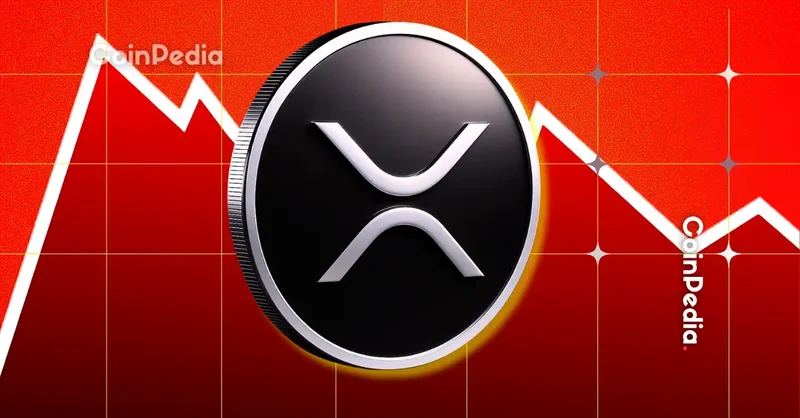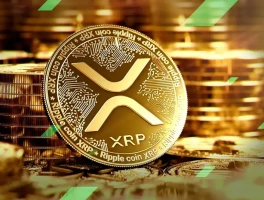This Isn't About Price. It's About Plumbing.
When the Bloomberg report first hit my screen, I saw the predictable chatter ignite online. "Ripple to buy back $1 billion of XRP." The headlines wrote themselves, with reports like Ripple seeks to buy $1 billion XRP tokens for new treasury: Report, and the knee-jerk analysis followed: it’s a price support mechanism, a confidence play, a classic corporate maneuver. And sure, on the surface, that’s not entirely wrong. But focusing on that is like seeing the first transatlantic telegraph cable being laid and only commenting on the price of copper.
You’re missing the point. Entirely.
What we are potentially witnessing here isn't just a financial transaction; it's an architectural one. This reported plan to raise a billion dollars through a SPAC—which, in simpler terms, is just a publicly-traded shell company designed to merge with a private one, offering a faster route to public capital—isn’t about propping up a token. It’s about laying the foundational infrastructure for a new kind of economy. When I first read this, I honestly just sat back in my chair, a little stunned. This is the kind of breakthrough that reminds me why I got into this field in the first place. It’s not about the daily charts; it’s about watching the blueprints for the next decade get drawn up in real-time.
Think of it this way. For centuries, nation-states built their power on treasuries of gold. Gold wasn’t just a shiny rock; it was a reserve asset that backed their currency, stabilized their economy, and gave them the power to trade, build, and project influence. A billion-dollar "Digital Asset Treasury" (DAT) isn't just a line item on a balance sheet. It’s the 21st-century equivalent of a sovereign gold reserve, but for a corporation. It’s a war chest of programmable, instantly transferable value, ready to be deployed. The real question we should be asking isn’t, "Will this make the price go up?" The question we must ask is, "What are they planning to build with it?"

The Programmable Treasury: A New Corporate Engine
Let’s connect the dots, because the pattern is electrifying. Ripple already holds a formidable stash of XRP, with billions more locked in escrow. But this move to actively go out and purchase another billion dollars' worth signals a strategic shift from being a passive holder to an active architect. This isn't about hoarding; it's about accumulating fuel for an engine they’re still building.
And we have a pretty good idea of what that engine looks like. Remember when Ripple recently acquired GTreasury, a major corporate treasury management company? That wasn't a random diversification. That was the acquisition of the dashboard, the controls, the entire operational system for this new engine. You don't buy a state-of-the-art mission control system unless you're planning to launch a rocket. Now, imagine combining GTreasury's sophisticated management tools with a billion-dollar, fluid, digital-native asset like XRP—the sheer velocity of what becomes possible is just staggering, it means the gap between a corporate financial idea and its global execution could shrink from months of paperwork and wire transfers to a few seconds of code.
This is the birth of the "programmable treasury." It’s a pool of capital that doesn't just sit there. It can be programmed to react to market conditions, to instantly settle cross-border payments for its entire supply chain, to provide liquidity for new decentralized applications, or to collateralize new financial products on the fly. We're seeing others dip their toes in the water—Trident, Webus, VivoPower—but a billion-dollar treasury, actively managed with purpose-built tools, is a quantum leap. It's the difference between having a savings account and owning your own central bank.
Of course, this raises profound questions about power and responsibility. What does it mean for a single company to wield an economic tool of this magnitude? The line between a multinational corporation and a digital city-state starts to blur. We need to have a serious conversation about governance and transparency as these new economic titans emerge. But we can’t let that caution blind us to the sheer innovative potential here. What new forms of global commerce, what new efficiencies, what new business models become possible when a company’s treasury is no longer a static vault but a dynamic, intelligent, and autonomous economic agent?
This Is the Ground Floor of a New World
Look, it’s easy to get lost in the jargon of SPACs and treasuries and tokens. But what this all boils down to is a fundamental change in what a company is and what it can do. For a century, corporations have operated on the financial rails built by governments and legacy banks. They were users of the system. What we’re seeing now are the first, bold steps of corporations building their own rails. A billion-dollar treasury of a native digital asset isn't just money; it's the raw material for building a proprietary economic ecosystem that can operate at the speed of information. This is the moment the passengers start laying their own track, and you have to wonder where it will lead.

